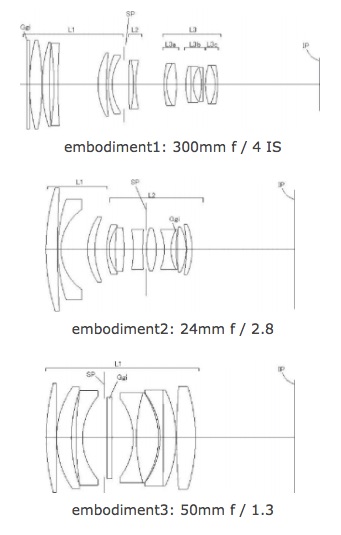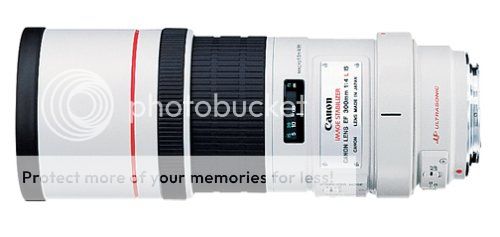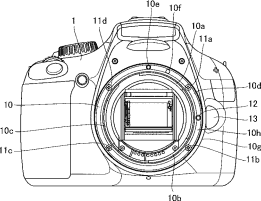Canon Patent for 24mm f/2.8, 50mm f/1.3, and 300mm f/4 Lenses with Optimised Refractive Index Distribution (EF 300mm f/4L IS replacement?)

Egami (translated) spotted a patent filed by Canon that could point to the next iteration of the EF 300mm f/4L IS lens (announced 2004). A 50mm and 24mm lens are also mentioned. If I got it right these lenses are also featuring optimised refractive index distribution.
The lenses described in the patent feature an optical unit with an optimised refractive index distribution over the lens’ optics. The described optical system consists of a first lens unit with positive refracting power, a second lens unit with negative refracting power, and a third lens unit that has positive refracting power. The aforementioned refractive-index-distribution element is arranged at the first lens unit. Such an optical system should be able to reduce various optical aberrations like chromatic aberrations.
- Patent Publication No. 2015-28551
- Published 2015.2.12
- Filing date 2013.7.30
- Example
embodiment Example Focal distance Fno. Half angle Image height Overall length of the lens BF One 294.00 4.14 4.21 21.64 239.07 83.42 Two 24.48 2.86 41.47 21.64 92.00 38.00 Three 51.70 1.30 22.71 21.64 94.01 37.50 Four 294.00 4.14 4.21 21.64 240.00 82.95 Five 6.15 20.45 71.28 2.88 3.71 3.69 30.34 9.98 2.89 3.60 84.11 86.12 90.41 11.74 15.68 8.50 Six 293.97 4.14 4.21 21.64 239.98 85.34 - Canon patent
- The use of refractive index distribution element

EF 300mm f/4L IS
[via Egami]





